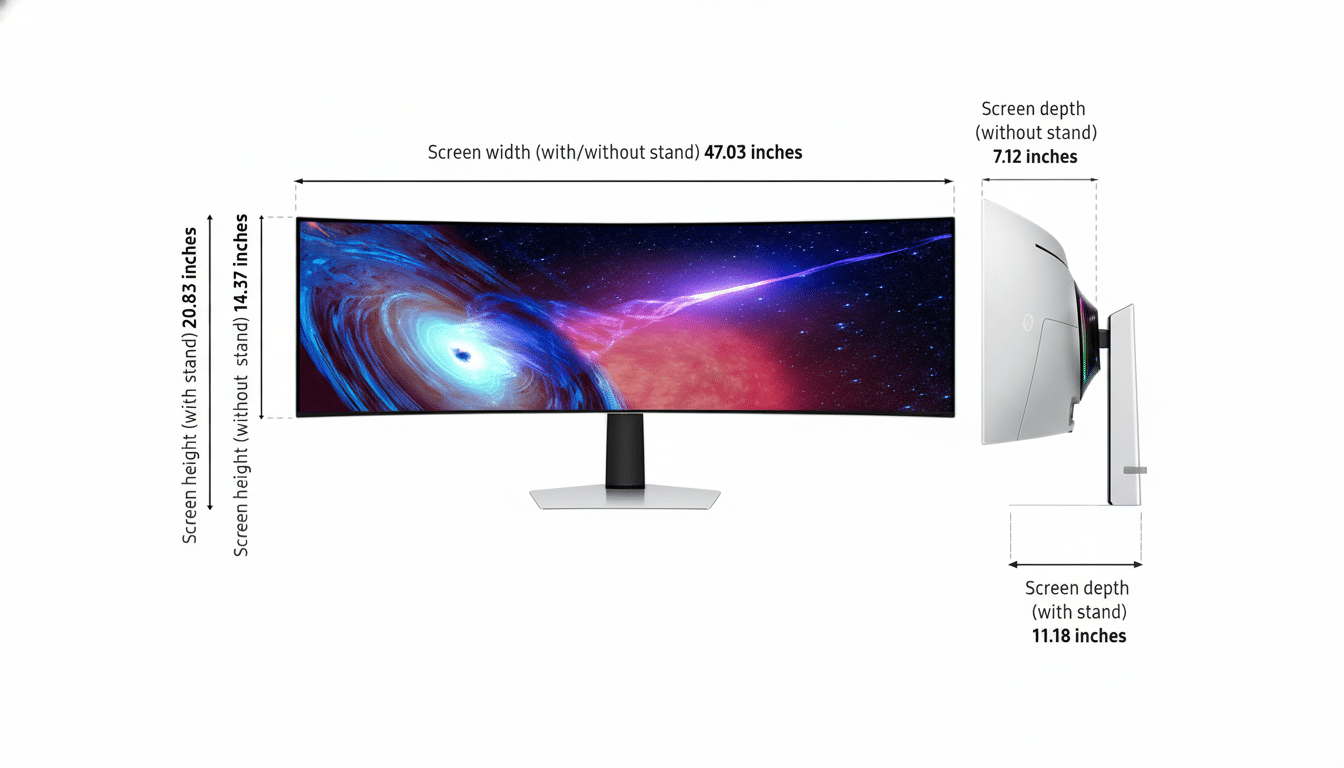A high-end gaming-focused flagship Samsung ultrawide just fell to an extremely rare price. That includes the 49-inch Samsung Odyssey OLED G93SC, a high-end QD-OLED curved monitor that can be had for about $880 at one of the biggest retailers on Earth right now (or approximately 45% below its usual $1,600 list price). That comes out as a de facto discount of nearly half off, for one of the most immersive displays you can possibly plant on a desk and one of the lowest prices we’ve seen deal watchers track in recent months.
What Makes This Samsung Odyssey Deal Stand Out
The Odyssey OLED G93SC (more commonly known as the OLED G9) effectively fuses a cinematic 49-inch canvas with deep blacks and eye-searing color volume of QD-OLED.

Featuring a deep 1800R curve and Dual Quad HD resolution of 5,120 x 1,440, it essentially gives you the desktop real estate of two 27-inch, 1440p panels minus the bezel gap. Competing 49-inch OLEDs from other brands typically sell for well over $1,200, which is why the sub-$900 price is catching the attention of enthusiasts.
Independent testing from the likes of RTINGS has noted OLED’s near-instantaneous pixel response time and virtually infinite contrast as huge improvements over VA and IPS panels. That results in crisper motion, cleaner edges, and shadow detail that doesn’t wash out — essential benefits in quick shooters, night racing, and dark dungeon crawls.
Immersive Specs Fit for High-FPS Gaming Play
With an impressive up to 240Hz refresh rate and lightning-quick response times, the G93SC is as honed for competition as it is for big-screen enjoyment. Both G-Sync Compatible and FreeSync Premium Pro are supported to maintain smooth frame delivery with reduced tearing and stutter when FPS goes from high to low.
Samsung’s QD-OLED panel provides wide color coverage and excellent uniformity, so lush open-world environments and HDR game engines really pop.
The 32:9 aspect ratio widens your peripheral vision in racing sims and flight games, and plenty of major titles — from Cyberpunk 2077 to Forza Horizon and Microsoft Flight Simulator — natively support ultrawide resolutions for a proper letterbox-free experience.

Burn-in is taken care of with more than a few security measures. There is a Thermal Modulation System that adjusts brightness preemptively to regulate surface temperatures. When logo and taskbar detection is on, this subtly dims static UI elements. A screen-saver-type feature fades the panel when not in use. Those tools, along with reasonable brightness settings (even at 450 nits), ensure the panel has a long life for everyday gaming and work.
The Power Of Productivity From PBP And PIP
That massive 5,120 x 1,440 canvas is good for something other than play. With Picture-by-Picture, two sources can be seen simultaneously — like a gaming PC and a laptop — side-by-side in 2,560 x 1,440 windows. (And don’t forget, Picture-in-Picture can help you maintain a small feed on the screen above your main view.) Videographers get a timeline that can finally breathe; developers keep their IDEs, terminals, and docs open side-by-side; traders stack chart views without squinting.
The 1800R curve helps to keep the edges within what your eye can naturally see without crossing into neck-swiveling and distortion of flat super ultrawides. After getting it tuned for comfortable viewing, the wraparound effect feels surprisingly natural for work as much as games.
What It Takes to Drive a 49-Inch Ultrawide OLED
5,120 x 1,440 at high refresh is demanding. If you’re gunning for triple-digit FPS numbers in today’s hottest games while also running at high settings, a modern high-end GPU — like the GeForce RTX 4080/4090 or Radeon RX 7900 XTX — is a plausible goal. Upscaling and frame-generation tech like DLSS, FSR, or XeSS can help keep it all smooth while not sacrificing visuals.
Connectivity is pretty basic, and HDMI 2.1 and DisplayPort 1.4 (with DSC) are fairly standard on a monitor in this class. Seek out VRR support on your GPU and console to make the most of the panel’s refresh range. As with OLED, always switch on an automatic brightness limiter, and have pixel-shift features enabled by default for longevity.
Value Verdict: Is the Samsung Odyssey OLED G9 Worth It?
Priced at about $880, the Samsung Odyssey OLED G93SC represents a rare combination of size, speed, and OLED splash for a cost that makes it substantially cheaper than competing 49-inch flagships. If you’ve been holding out for a big-screened, high-refresh ultrawide without the high-ticket hits, this is the kind of drop that only comes around once in a while — and it’s an easy fit on any gamer or productivity fiend’s desk.

